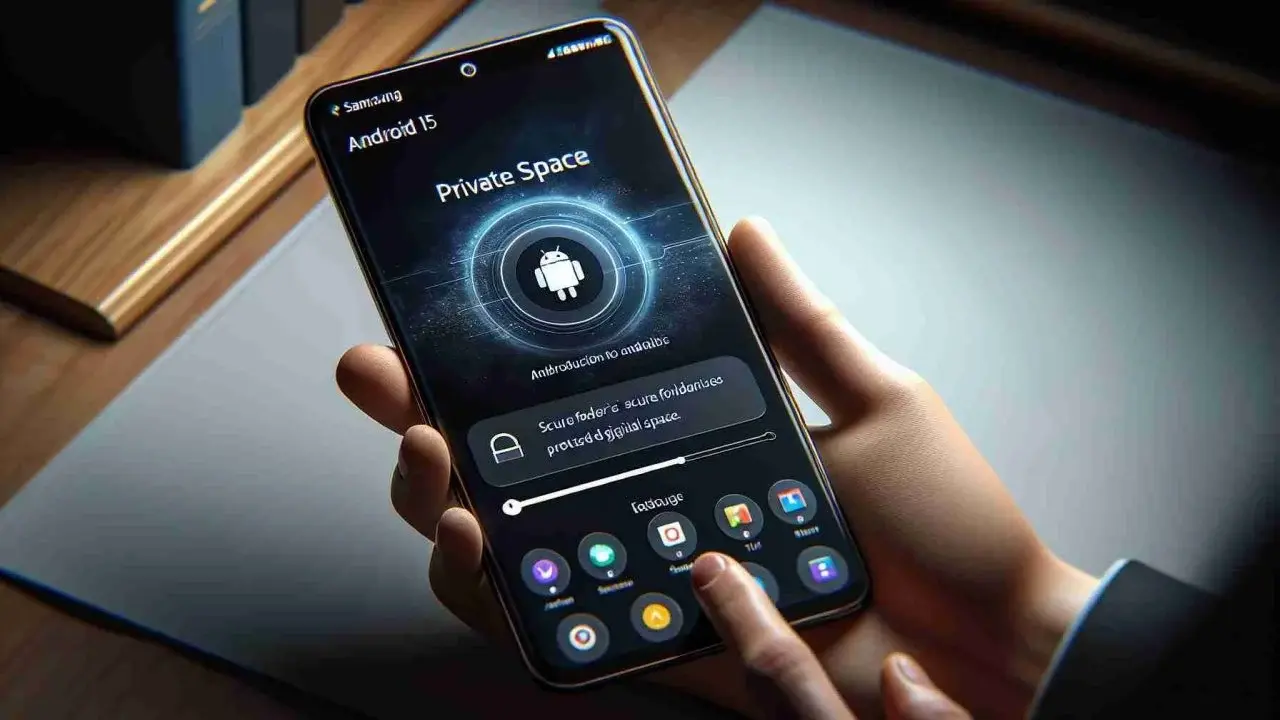The world of mobile technology is abuzz with anticipation for Google's upcoming Android 15 update. Although the official presentation is still a few months away, beta versions already give an idea of the new functions that will appear in the future. One of the more intriguing discoveries is a potential privacy-focused feature aimed at preventing accidental data leaks during screen sharing.
Android 15 is ready to improve user privacy with data leakage protection during screen sharing

This article takes a detailed look at this exciting development, its technical underpinnings, potential benefits, and the current state of implementation in the Android 15 beta.
We open the "Protection of sensitive content" function
In the latest Android 15 beta (version 1.1), observant developers discovered a hidden feature in the developer options menu. A setting called “disable screen sharing protection” has sparked a lot of interest, hinting at a new system known as “sensitive content protection.” While full functionality is currently disabled, early signs point to a new approach to screen sharing on Android.
The main idea behind this feature is to allow apps to hide or obscure sensitive parts of the screen during sharing or recording sessions. This may include various information such as:
- Password input fields: Prevent accidental disclosure of login information by blurring or masking password fields as they are entered.
- Financial information: Automatically hide sensitive financial data displayed in banking applications to protect user privacy.
- Notification: Temporarily suppress sensitive notifications containing private messages or sensitive data to prevent their inadvertent disclosure.
This is a significant shift from the current approach to screen sharing on Android, where users are told that the sharing app has access to all content on the screen. Although this is a step towards transparency, it puts the responsibility of protecting sensitive information on the user. The proposed "confidential content protection" function aims to automate this process, offering a more reliable level of security.
Advantages and considerations
The advantages of this function are obvious. Accidental data leaks during screen sharing are a common problem, especially for users who frequently share screens for support or presentations. By automatically hiding sensitive data, Android 15 will significantly improve user privacy and confidence.
However, some considerations deserve further study:
- Details of control: Will users be able to customize what content is considered private? Giving users control over the editing process will allow them to tailor the feature to their needs.
- Compatibility with applications: Ensuring seamless integration with existing applications is critical. Some applications may require updates to take full advantage of the “sensitive content protection” features.
- Potential abuse: Despite good intentions, malicious programs can use editing capabilities to hide illegal actions during screen sharing. To prevent such abuse, robust security measures must be taken.
There is still a lot of work to do: beta testing and improvement
As with any new feature in development, the "sensitive content protection" system will be improved in the following beta versions of Android 15. Monitoring future beta versions will provide valuable information about the development of this feature and its eventual integration into the final version of Android 15.
As such, the inclusion of “privacy content protection” in the Android 15 beta is a promising step towards a privacy-focused mobile experience. The ability to protect sensitive data during screen sharing meets a significant need for users and enables them to share their screens with confidence. As this feature develops, taking these considerations into account will ensure its effectiveness and convenience for users.
Beyond the direct application of this feature, its development reflects a broader trend in mobile technology. As user privacy becomes more and more important, we can expect further progress in the design of operating systems and applications that prioritize user control over personal information and protection against data leakage.
Deep diving: Technical implementation and potential future directions

While the details of the "sensitive content protection" feature are still somewhat mysterious, exploring potential technical approaches can offer valuable insights. Here we will discuss two main methods of implementation:
1. Integration at the application level:
- This method uses APIs (Application Programming Interfaces) from the Android 15 framework, which allow applications to identify and hide sensitive content in their interfaces.
- Drive:
- Granularity Control: Applications can customize the editing process for specific data types and interfaces.
- Integration with existing code: Using existing application code to identify content can simplify implementation.
- Disadvantages:
- Burden on application developers: Integrating APIs into existing applications will require additional effort.
- Inconsistent implementation: The performance of a feature will depend on individual integration decisions of developers.
2. Editing at the system level:
- This approach uses the Android 15 framework to detect and hide sensitive content in all apps.
- Drive:
- Unified protection: All apps and screen content will follow the same editing rules.
- Reduced burden on developers: Application developers will not need to modify their applications to use this feature.
- Disadvantages:
- Potential for false positives: System-wide redaction rules can accidentally hide non-sensitive information.
- Limited customization: Users may have less control over what content is considered confidential.
Google's choice is likely to balance these two methods, offering APIs for application-level controls, while a system-level editing mechanism handles common sensitive data types.
In addition, the "sensitive content protection" feature may lead to more advanced privacy controls in future Android updates. Some possibilities include
- Context-oriented editing: Dynamic detection of sensitive data based on screen context, such as editing only the user's phone number during a video call.
- User Defined Editing Areas: Allowing users to select specific areas for editing during screen sharing, offering fine-grained control over the information being shared.
- Integration with protected enclaves: Temporarily store redacted data in a secure area on the device for enhanced security during screen sharing.
These innovations will strengthen Android's position as a leader in the field of protecting the privacy of mobile users, allowing users to confidently share their screen without risking sensitive information.
Conclusion: The privacy-focused future of screen sharing
The "privacy protection" feature in the Android 15 beta represents a significant step in the direction of protecting users' privacy when sharing the screen. Although this innovative feature is still under development, it has great potential to protect sensitive information and create a more secure mobile environment. As it develops in beta versions and possibly future versions of Android, its impact on user trust and mobile security will be noticeable. With an emphasis on user control and context-sensitive functionality, Android ushers in a new era of secure and private screen experience.



